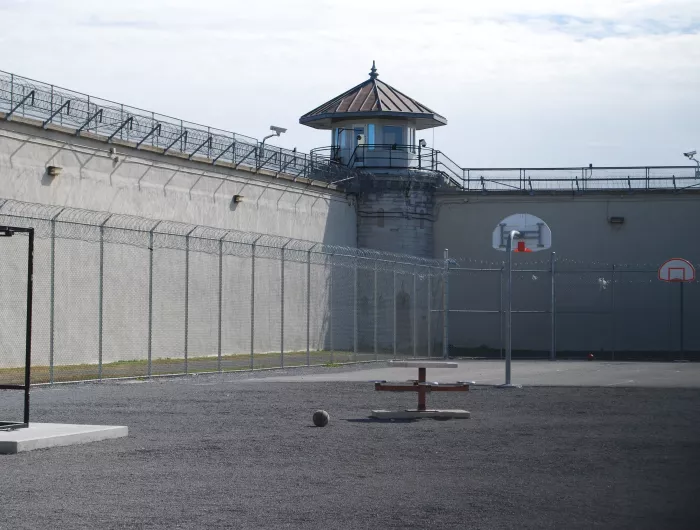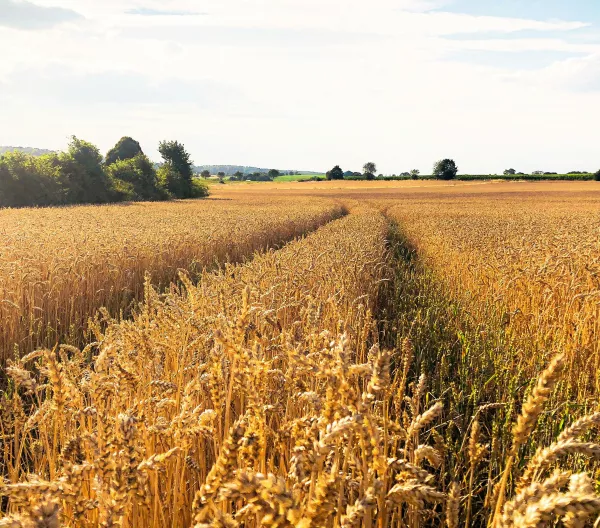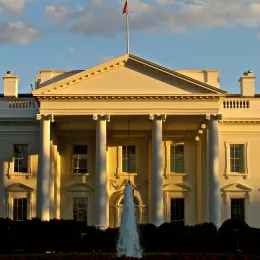Government food purchasing and service: Resources on the carceral food system

Larry Farr - unsplash.com.
This section includes reports on the current state of food in adult and youth correctional facilities, expert recommendations for improving policies and practices, and sample advocacy materials from ongoing campaigns. This section is most applicable to advocates and policymakers.
Resources
- Eating Behind Bars: Ending the Hidden Punishment of Food in Prison (2020) | Impact Justice: This six-part report is a first-of-its-kind national investigation of food in state prisons in the United States. It explores the inequities and troubling trends in prison food by centering the perspectives of people with lived experience of eating while incarcerated, complemented by a literature review, national policy scan, and interviews with other key stakeholders.
- Strategies to Optimize Food and Nutrition in Correctional Facilities (2021) | CSPI: This report is based on the insights of an expert work group that convened throughout 2020 to synthesize information about the correctional food landscape. The report includes recommendations for advocates, policymakers, and funders seeking to optimize food and nutrition in adult and youth correctional facilities.
- The Public Health Implications of Prison and Jail Food (2023) | CSPI: In this blog post, CSPI Senior Policy Associate Jessi Silverman demonstrates why prison and jail food is a public health issue and how measures like the FRESH STARTS Act in Washington, DC, could meaningfully improve the health and well-being of incarcerated people.
- The State of Prison Food in New England: A Survey of Federal and State Policy (2023) | Vermont Law & Graduate School Center for Agriculture & Food Systems: This report examines the laws and policies that shape food in New England’s publicly operated correctional facilities. It offers recommendations for advocates and policymakers to ensure nutritious and safe meals while improving how prison food is sourced and served.
- Leveraging Juvenile Justice Food Environments to Advance Health Equity (2020) | ChangeLab Solutions: This brief describes four main components of juvenile justice food environments and the policies and regulations that shape them at the federal, state, and local level.
- Juvenile Justice (n.d.) | Alliance for a Healthier Generation: This site provides a suite of resources to guide juvenile justice facilities through a six-step process for establishing and implementing nutrition and other wellness policies.
- Farm to Corrections: Promising Practices From Across the United States (2023) | ChangeLab Solutions, Nutrition Policy Institute, Impact Justice: This brief includes case studies of successful approaches correctional facilities have taken to increase access to fresh, local produce for people in custody.
- Farm to Corrections: Opportunities & Challenges in Integrating California-Grown Produce into the State Prison System (2023) | ChangeLab Solutions, Nutrition Policy Institute, Impact Justice: With an eye toward increasing procurement of California-grown fruits and vegetables by California state prisons, this report describes the current state of affairs and identifies opportunities and challenges for expanding local sourcing. The analysis is based on interviews with key stakeholders, policy analyses, and procurement scans.
- “I Refuse to Let Them Kill Me”: Food, Violence, and the Maryland Correctional Food System (2021) | Maryland Food & Prison Abolition Project: This groundbreaking report on food conditions in Maryland’s prisons is a first-of-its-kind investigation into prison food from an abolitionist perspective. It is the culmination of two years of research, conversations, interviews, and dialogue circles with individuals formerly and currently imprisoned in Maryland.
- The High Cost of Cheap Food: Eating in West Virginia Prisons (2023) | West Virginia Center on Budget & Policy: This report highlights the negative food quality and health impacts of transitioning from state-run to privatized food service in West Virginia prisons. In addition, the report points to higher economic and healthcare costs–and the correlation with higher rates of incarceration–that are associated with the privatization of prison food.
- Food in Jails Should Heal Not Harm Coalition Community Conversations Report (2024) | PG Changemakers, Life After Release, Prince George’s County Food Equity Council: This report sheds light on the food conditions in the jail in Prince George’s County, Maryland through findings from audits of the facility and community conversations and surveys with formerly incarcerated individuals.
- Food and Nutrition in New York State Correctional Facilities (2024) I Correctional Association of New York (CANY): Drawing on interviews with incarcerated individuals, site visits, and policy and data review, this report describes the status of food and nutrition across 17 New York State (NYS) prisons. CANY recommends actions that the Department of Corrections and Community Supervision can take to improve health and nutrition outcomes of individuals in its custody.
- Hungry and Malnourished: Food Service in the Pennsylvania Department of Corrections (2024) | Pennsylvania Prison Society: This report is an independent evaluation of the state of prison food in Pennsylvania (PA). It finds that residents of PA state prisons regularly experience hunger and a lack of nutritious offerings and identifies steps the Department of Corrections should take to address these problems.
- “We’re Hungry in Here”: Food Insecurity Behind the Walls of D.C.’s Jails (2023) | DC Greens: Rancid milk, moldy bread, and green bologna–this report summarizes the disturbing findings of a 2023 survey of incarcerated residents of Washington, DC’s jails.
The latest
New York State passes bill to transform public food purchasing
Food Service

DC Council bill falls short of needed improvements to jail food
Government Accountability

Biden administration makes progress toward hunger and nutrition commitments but major items still outstanding
Government Accountability

How the Biden administration can transform food in federal facilities for millions of people
Government Accountability

Incarcerated people deserve healthy meals and a balanced diet
Government Accountability

Tags
Topics

